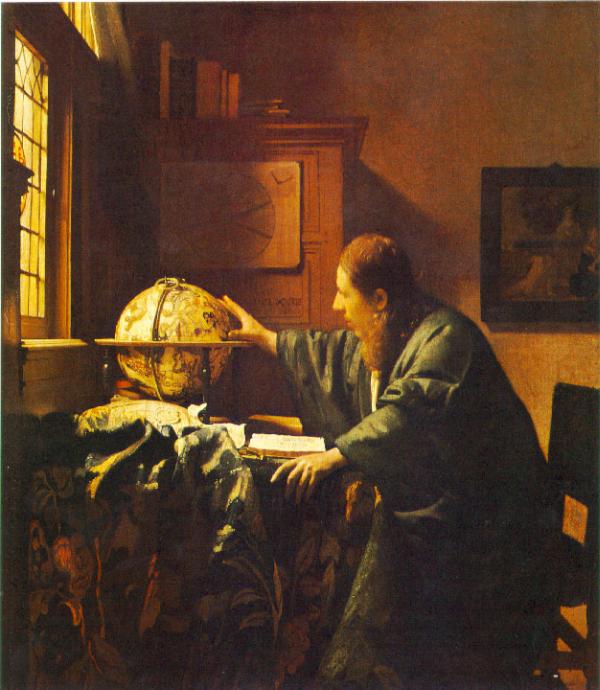
Johannes Vermeer
Johannes Vermeer, who is thought to have completed his painting "The Astronomer" in around 1688, is today recognised as one of the great masters of seventeenth-century Dutch painting. This was not always the case. Although he had received some recognition in his home town of Delft during his lifetime his reputation declined after his death.
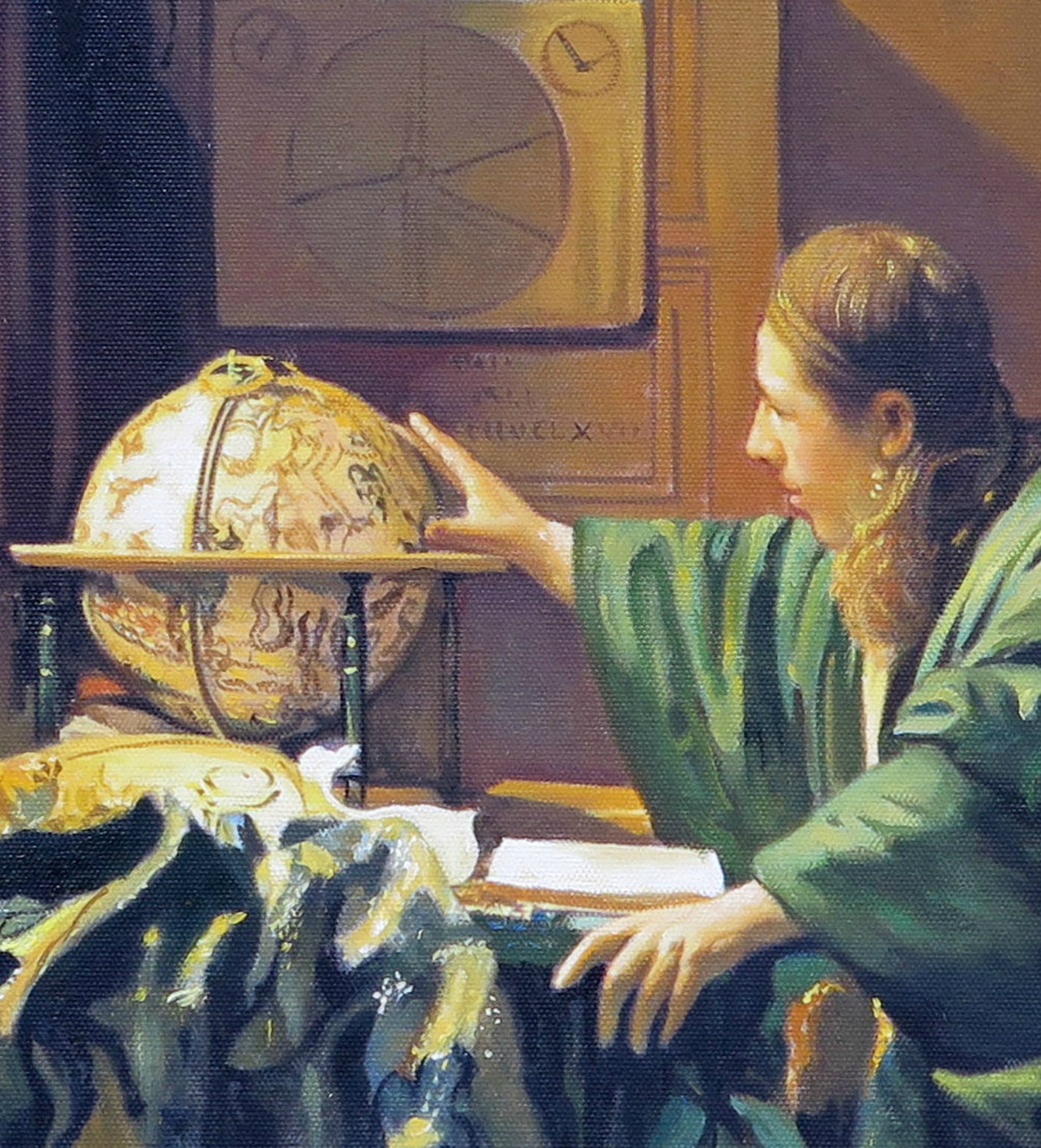
Johannes Vermeer De Astronoom 1668 De reproductie van het Etsy
Johannes Vermeer, The Art of Painting, 1666-69, oil on canvas, 130 x 110 cm (Kunsthistorisches Museum, Vienna). Speakers: Dr. Steven Zucker & Dr. Beth Harris.

De Astronoom 1668 Johannes Vermeer Louvre paris Peintre, Johannes vermeer, Peinture flamande
The Astronomer (Dutch: De astronoom) is a painting finished in about 1668 by the Dutch Golden Age painter Johannes Vermeer. It is in oil on canvas with dimensions 51 cm × 45 cm (20 in × 18 in). Description Johannes Vermeer, The Geographer 1668-69 oil on canvas; 53×47 cm. Steadelsches Kunstinstitut, Frankfurt, Germany.

"Johannes Vermeer The Astronomer (De astronoom) (1668)" Poster for Sale by HistoryRestored
1. It was painted in the year 1668. The Astronomer is the name of a painting created by Dutch Golden Age painter Johannes Vermeer.Even though the exact date is unclear, it's assumed he created it in the years 1667 and 1668.. It depicts a man in his thirties who is studying astronomy, something we can see from the fact that he is carefully looking at a celestial globe and a book about astronomy.

Reproduction de L'Astronome de Johannes Vermeer Galerie MontBlanc
The Astronomer (Dutch: De astronoom) is a painting finished in about 1668 by the Dutch Golden Age painter Johannes Vermeer. It is in oil on canvas with dimensions 51 cm × 45 cm (20 in × 18 in).. Value; dbo:abstract: L'astrònom (en neerlandès, De astronoom) és una pintura (oli sobre llenç, 51 cm × 45 cm) de Johannes Vermeer pintada al.
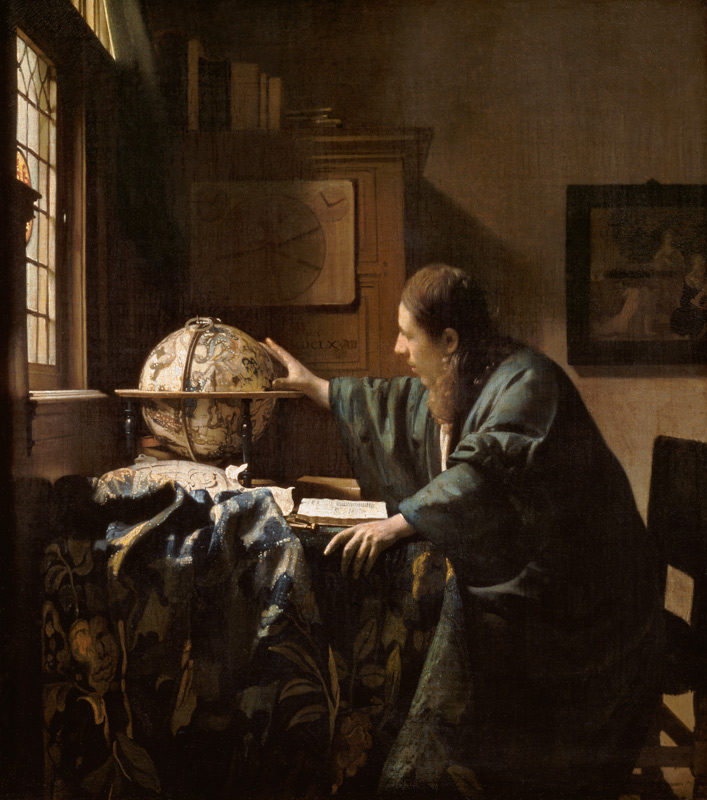
De astronoom schilderij van Johannes Vermeer verkrijgbaar als kunstdruk, als poster, op canvas
The Astronomer The Astronomer (c. 1668) is a painting by Johannes Vermeer in the Louvre Museum . Joconde database: entry 00000059245 Media in category "The Astronomer by Johannes Vermeer" The following 23 files are in this category, out of 23 total. J. VERMEER - El astrónomo (Museo del Louvre, 1688).jpg 2,090 × 2,395; 5.47 MB
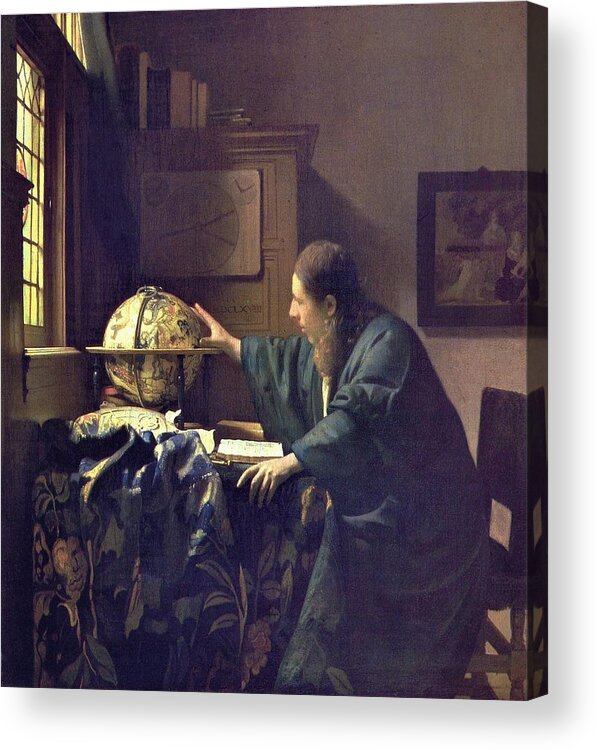
The Astronomer Francais L'Astronome De astronoom Der Astronom Acrylic Print by Johannes Vermeer
Possibly, the subject was Vermeer's good friend Anton van Leeuwenhoek, discoverer of protozoa, among other things, and inventor of the first modern microscope. Thanks nerd!. De astronoom) is a painting finished in about 1668 by the Dutch Golden Age painter Johannes Vermeer. It is in oil on canvas with dimensions 51 cm × 45 cm (20 in × 18 in).

De Astronoom (Johannes Vermeer) Kunstopdoek.nl
The Astronomer. (De astronoom) 1668. Oil on canvas, 50 x 45 cm. Musée du Louvre, Paris. Information. In-depth information about this painting. Critical assessments. 800 x 905 pixel image.

De Astronoom (Johannes Vermeer) Kunstopdoek.nl
6287 : 12965 : Authority file : Source/Photographer See below. Other versions Higher resolution: 4,401 × 5,000 pixels Licensing[ edit] This is a faithful photographic reproduction of a two-dimensional, work of art.

Art The Astronomer (1668) by Johannes Vermeer, at the Louver, Paris, France
The Astronomer (Dutch: De astronoom) is a painting finished in about 1668 by the Dutch Golden Age painter Johannes Vermeer. It is in oil on canvas with dimensions 51 cm × 45 cm (20 in × 18 in). Oops something went wrong: 403 The Astronomer is a painting finished in about 1668 by the Dutch Golden Age painter Johannes Vermeer.

De Astronoom (Johannes Vermeer) Kunstopdoek.nl
Johannes van der Meer, Jan Vermeer, Jan Vermeer van Delft, Johannes Reyniersz. Vermeer. Description: Dutch painter and art dealer: Date of birth/death: October 1632: 15 December 1675 (buried) Location of birth/death: Delft:. Database of Art Objects at the Jeu de Paume ID:.
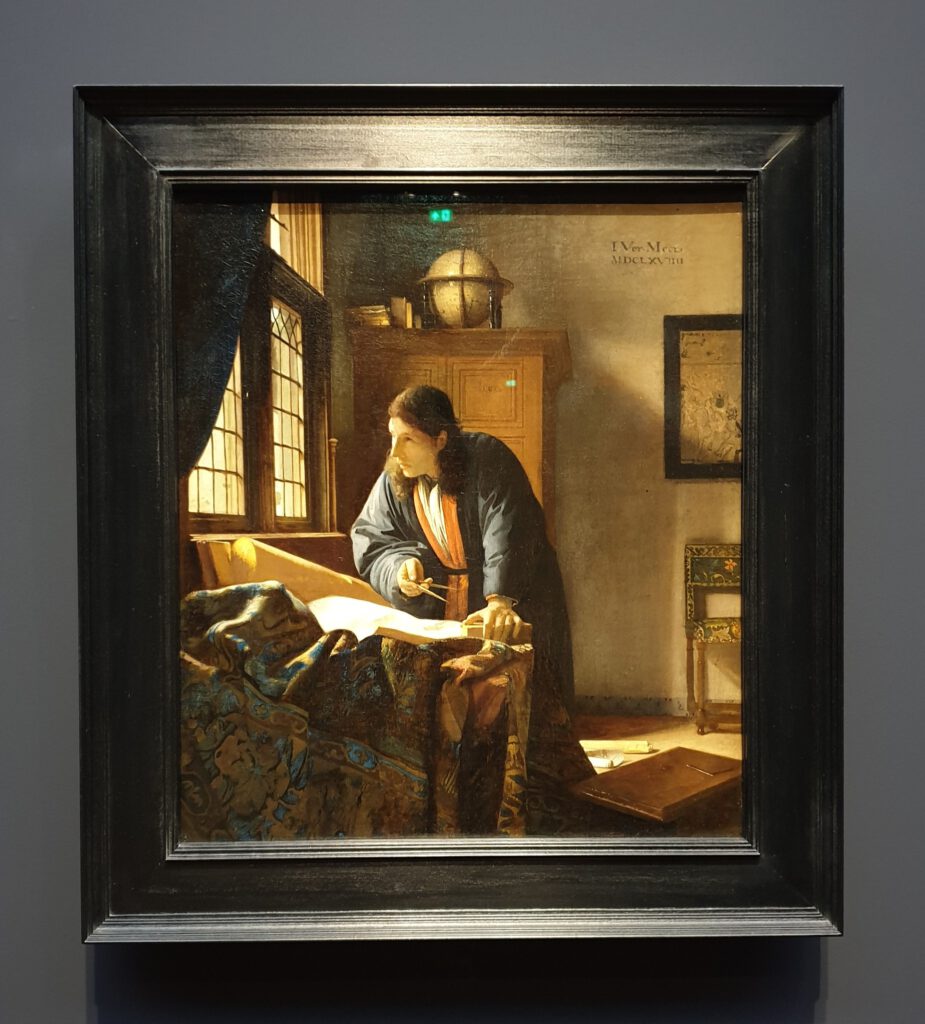
Twee keer Vermeer, de astronoom en geoloog Hofcultuur
THE ASTRONOMER by Johannes Vermeer HOME CATALOGUE TECHNIQUE BOOKSHOP GLOSSARY EVENTS POPULAR PAGES SEARCH The Complete Interactive Vermeer Catalogue The Astronomer (De astronoom) 1668 Oil on canvas 50 x 45 cm. (19 5/8 x 17 3/4 in.) Musée du Louvre, Paris inv. RF 1983-1928 Looking for another painting by Vermeer? Find it with QUICK SEARCH!

Provenance and the Echoes of Fascism
Johannes Vermeer (/ v ər ˈ m ɪər, v ər ˈ m ɛər /, Dutch: [vərˈmeːr], see below; also known as Jan Vermeer; October 1632 - 15 December 1675) was a Dutch Baroque Period painter who specialized in domestic interior scenes of middle-class life. He is considered one of the greatest painters of the Dutch Golden Age along with Rembrandt.During his lifetime, he was a moderately successful.
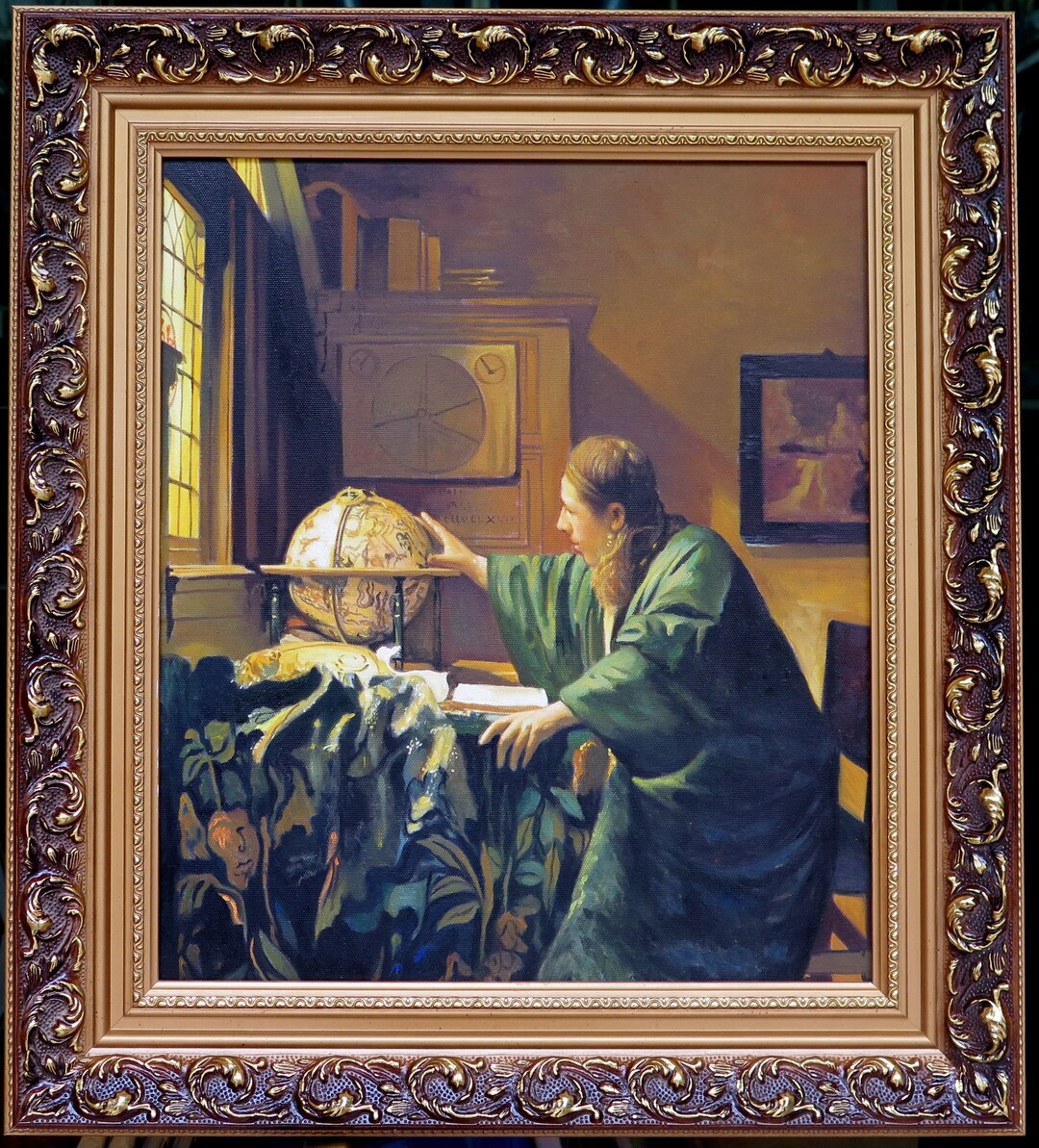
Johannes Vermeer De Astronoom 1668 Hoge kwaliteit olieverf Etsy Nederland
This is an astronomy and geography textbook published by astronomer Adriaen Metius (1571-1635) in 1621. On the opened page of the book, we can see a drawing of an astrolabe, which was designed by Metius himself. The text on the adjacent page suggests that astronomers should seek 'inspiration from God'. Such divine inspiration perhaps.
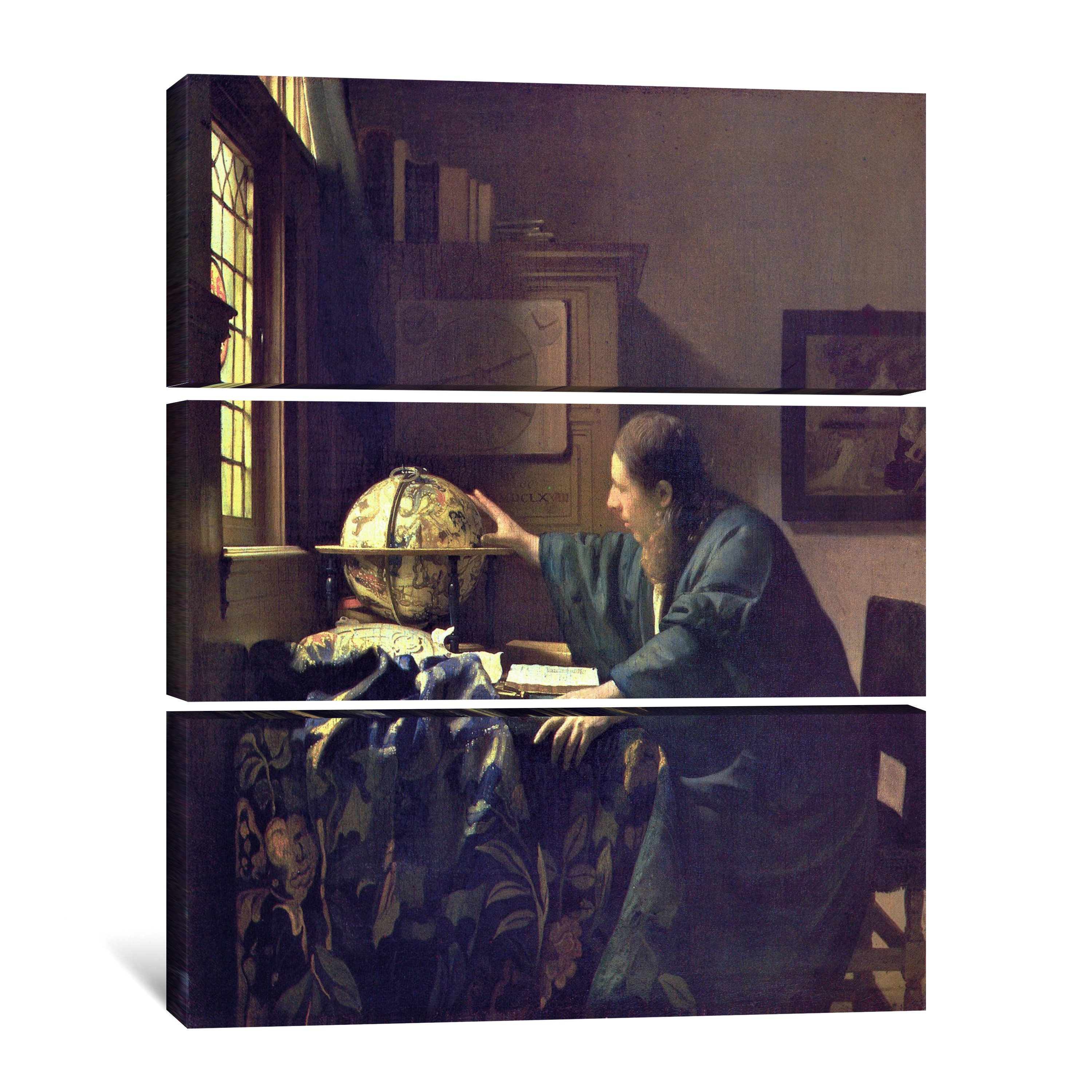
Johannes Vermeer De Astronoom 1668 Canvas Gallery Wrapped Etsy Nederland
Johannes Vermeer, The Astronomer. Dutch, c. 1668. Reproduced by kind permission of The Louvre, Paris. Globe. Natural philosophers were a favourite subject of early modern artists.. De Revolutionibus. Augsburger Wunderzeichenbuch. Miniature Portrait. Vermeer's astronomer. Emblem Book. The Marketplace. The Royal Exchange. Recreational Space.

VERMEER, JOHANNES De astronoom, Abraham Delfos, , 1794 Johannes vermeer, Vermeer paintings
The most intriguing link is that which lies latent in two paintings by Vermeer. In 1667 and 1668, a man in his late thirties posed for the painter as he worked on two seemingly associated pictures with scientific themes. These were Vermeer's only two paintings—at least the only two to survive—with solitary male figures as their protagonists; today the pictures are called The Astronomer and.